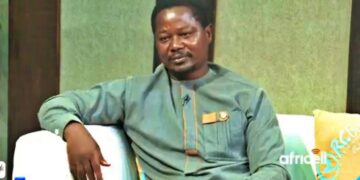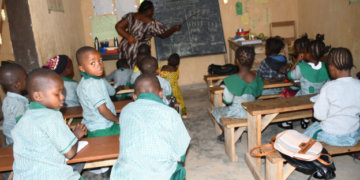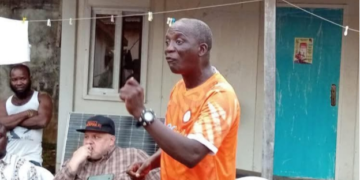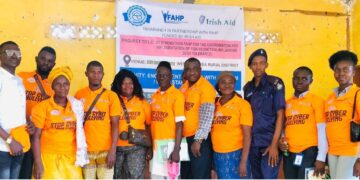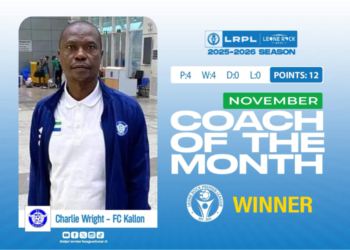By Alieu Amara Suwu
In the ongoing murder trial of Sia Fatu Kamara, the prosecution, on Friday, October 25, 2024, brought to court Saminatu Tarawally as the fifth witness and Nuretta Mariatu Kamara as the sixth prosecution witness, who testified as to the role they played when Sia was taken to the emergency surgical hospital/center by the accused.
The fifth prosecution witness introduced herself as a nurse working at the Emergency Surgical Center at Goderich. She said her duties, among others, are to receive patients and administer treatment to them.
She recognized the accused and further recalled the incident on 13th August 2024. According to her, on that day, she was on duty when one of the securities at the hospital rushed in and informed them about an emergency situation. And upon the receipt of that information, her team leader Nuretta Kamara instructed her and the security, Abdul Kargbo, to bring the patient whom the accused vehicle had brought in his vehicle. This they did as instructed.
In her Examination-in-Chief, the fifth witness said it was the accused that brought the deceased to the hospital, and on their arrival, the deceased was held in the accused arms motionless. She helped place her on the hospital bed and took her to the critical ward at the outpatient department.
According to the witness, she was the one that tore the clothes the deceased was wearing with scissors, and the team leader ordered one of her colleagues, Amida, to fix the monitor on her while the team leader, Nuretta, examined the deceased pulse to ascertain whether she was still alive.
The witness, giving further evidence, said to conduct further examinations, her team leader called some international and local doctors for help.
Upon arrival of the doctors, she was ordered by her boss to leave since they were on early shift, so she left for her house.
In conclusion, she said the accused and the deceased were the only ones that came to the hospital.
During cross-examination by Lawyer Emmanuel Teddy Koroma, lead defense counsel for Abdul Kpaka, the fifth witness said she was on duty on the 13th of August 2024 when the deceased was brought to the hospital. Lawyer Koroma said as a night shift nurse she starts work at 8 p.m. and leaves at 8 a.m.
He asked whether they have a daily roster indicating shifts of staff at the hospital; the witness replied in the affirmative.
When asked whether the emergency hospital has high security protection, she said yes and backed backed with CCTV cameras all around the hospital.
Lawyer Koroma put it to the fifth witness that on the day in question, all the cameras were on, and the witness replied in the affirmative, saying that they (cameras) will only provide evidence within a month and thereafter they will delete records.
When she was further questioned as to whether she was the CCTV camera operator, she said no, therefore does not know the storage capacity.
Lawyer Teddy asked the witness that the CCTV camera will help the court to know the exact state as to how the deceased was brought to the court. The judge refrained the witness from answering the question, stating that she is not competent to answer such a question.
The witness further confirmed that herself and one of their cleaners aided the deceased into the hospital on a bed when she was brought.
It was suggested to the witness that, when the deceased was brought to the hospital, she was placed on a wheelchair and not on a bed; the witness, however, responded in the negative.
When she was asked as to the state in which the deceased was brought to the hospital, the witness said she was unconscious and helpless. She also revealed that when a patient is brought to the hospital, they receive him or her and take details of the said patient, saying that she did the same for Sia when she was brought and stripped her clothes with scissors because she was unable to tear it. The witness also disclosed that it was Amida that fixed the monitor on the instruction of Nuretta, while Nuretta checked the pulse of the deceased.
When she was further questioned as to how long she has worked at the emergency hospital, she said for three years.
She noted that they have an outpatient chart form. Based on this, the defense asked if a chart form was issued to the deceased when she was brought; the witness said she cannot tell because she had left when the local and international doctors came to help her.
When she was asked whether she was present when Cardio Preliminary Resuscitation (CPR) was conducted on the deceased, the witness in her reply said she was not there.
In another development, the 6th Prosecution witness, Nuretta Mariatu Kamara, in her Examination-in-Chief led by state Counsel Yusuf Isaac Sesay, said she is a nurse and team leader working at the outpatient department in an emergency hospital.
Her role, she said, is to supervise the nurses and ensure that doctors are always at the outpatient department; prepare a monthly duty roster that indicates the time and dates nurses should come to work. According to her, she has been working at the emergency hospital for the past thirteen years and as a team leader since last November.
“I am in a permanent morning shift that runs from 8 am to 4 pm. I recognize the accused, Abdul Kpaka. On the 13th of August 2024, I was on duty at the outpatient department. While I was there asking the nurses that were on duty about the night shift, which is my normal routine, one of the security guards, Abdul, rushed inside and informed me about an emergency situation,” she testifies.
Upon receipt of that information, she said she instructed PW5 and one of the cleaners to go and collect the patient that was in a vehicle parked outside the compound, which they did. The time she said was around 8:20 am, and immediately she was brought. The witness said she observed that her upper limbs were flexible.
She explained that the emergency outpatient department is divided into two sections: one for patients whose conditions are not too serious and the other for patients whose conditions are critical—called the critical area as it contains all the machines they use to treat and save lives.
Madam Kamara said when the patient (deceased) was brought to that critical area, she was already there with Amida together with one nurse, Fatima, whom she instructed to go to the relative (accused) of the patient for information.
She also revealed that she instructed Saminatu to tear the deceased’s clothes and Amida to fix the monitor on her, which they did. She added that while Amida was fixing the monitor she was checking her pulse but said there were no signs of pulse, and thereafter checked for signs of breathing but there were no signs of breathing.
The sixth witness, in further evidence, said she also heated her shoulder and called her, but there was no response. She checked her again with the monitor, which was supposed to show four signs, which are breathing, pressure, reading of the heart, and the level of oxygen, but there were no signs and everything was blank.
“I immediately took the Falco (a radio system) and called the team of doctors, among them international and local doctors, and upon their arrival, they asked me what was wrong with her. I told them that the patient fell—because that was what we were told,” the sixth witness explained.
She also revealed that before the arrival of the doctors, she started the CPR on the deceased; nothing that it is a procedure they do to patients that do not have a pulse and do not breathe. The deceased, she said, was also examined by the doctors, who continued the CPR and also ordered medicine for her, which they administered to her. The drugs she said included adrenaline and naloxone. She explained that, after administering the drugs, they continued the CPR for about 20 to 25 minutes and stopped upon the instructions of the doctors.
The entire process of resuscitation, she said, lasted for about 20 to 25 minutes, and the deceased, she said, was declared clinically dead by the doctors. According to the witness, clinically dead means that medically confirmed dead.
She explained that the outpatient chart was handed over to Dr. Kallon upon his request while herself and the international doctors went outside and called the accused, who was at the outpatient area crying bitterly.
The witness said she felt sorry for him hence started consoling him and further asked him questions as to what really happened to the deceased, but said it was very difficult for him to explain because he was crying bitterly. However, she said the accused told her the deceased fell and hit her mouth.
The international doctor she said revealed to the accused that Sia was already dead before she was brought to the hospital, and the accused further burst into tears.
“I told him that we did all we could to save her but to no avail. He was still crying, so I became emotional, and I started crying too. I informed him that we do not have a mortuary to keep the remains and that he should call someone to help him because of the state he was in. He promised to call, and I left and went to continue my work. Upon my return, the body had been wrapped and placed inside the room where corpses are kept until they are collected by their relatives,” she narrated.
She said a few minutes later, three ladies approached her: one who identified herself as a sister to the accused, and the other two identified themselves as the deceased’s sisters. She said the remains of the deceased were shown to them, which were removed from the room and placed inside the vehicle they came with, and they left.
The outpatient chart of Sia (now deceased) when she was brought to the emergency hospital was shown to the witness for identification, and she identified it. It was marked as exhibits Y.
Lawyer Koroma, in his cross-examination of the witness, confirmed that Sia was declared clinically dead by the doctors.
When asked that, apart from the clinically dead declaration done by doctors, was there any other form of declaration, she responded that she is a nurse and therefore cannot declare someone dead; only the doctors can.
When she was further questioned whether it is to her knowledge that a clinically dead declaration can be reverted, the witness responded that she could not tell.
She revealed that the deceased was brought inside the outpatient critical area in a stretcher and not a bed, and that forms for patients are normally filled.
When she was asked as to whether the form has details as to how the patient is brought and taken out, the witness in reply said they have.
She also revealed in cross-examination that she did a physical examination on the deceased and later tried to resuscitate her before the doctors came, adding that the process of resuscitation was done with force. She further stated that it is a very difficult procedure that cannot be carried out by one person. She explained that most of the doctors physically took part in the resuscitation of Sia.
The witness in further cross-examination revealed that adrenaline helps the heart to function well and boost the energy, while naloxone neutralizes drugs in a patient’s system.
Madam Kamara confirmed that the CCTV footage would show clearly the state in which the deceased was brought into the critical area.
When asked as to whether a pronouncement of dead on arrival is done immediately after the patient is brought to the hospital, the witness said no, that is not true.
The matter was adjourned to Friday, November 1, 2024.


